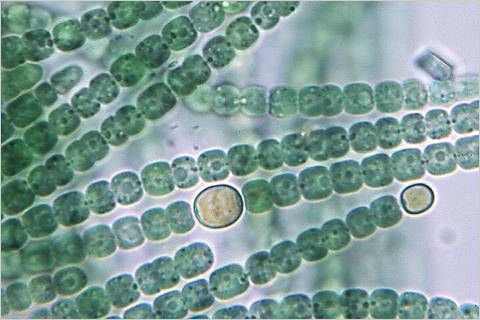Anabaena is a type of cyanobacteria that contains over 40 species. It can live in waters with a diverse range of temperatures and salinity. Anabaena is a well studied organism in the scientific community due to its formation of specialized cells. These are cells called heterocysts which are vegetative cells that have lost the ability to photosynthesize. However, they have gained the ability to fix nitrogen in low oxygen conditions. It is a colonial organism that forms long chains called trichomes which reproduce by fragmentation.
Anabaena form symbiotic relationships with other species of plants. In a symbiotic relationship, both the host organism and the occupant organism benefit from each other. Anabaena lives inside of other plants where it is protected from predation. The host plant is benefitted by this because the Anabaena can fix nitrogen that the plant can then use for protein formation and the creation of nucleic acids and other cellular constitutes. Plants that may contain anabaena are ferns, liverworts, and angiosperms (flowering plants). While Anabaena can benefit plants, it can be harmful to animal species that drink water contaminated with the cyanobacteria. Because of this, Anabaena should be controlled with Cutrine Ultra algaecide.

No comments:
Post a Comment